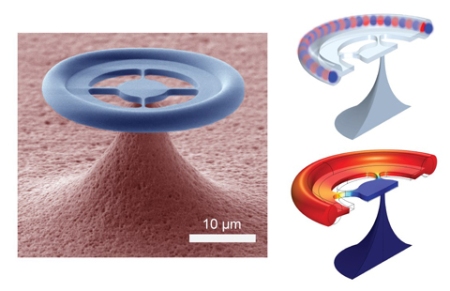A new microscopic system has been established by researchers at the Max Planck Institute of Quantum Optics (MPQ) and the Ecole Polytechnique Fédérale de Lausanne (EPFL).

The researchers demonstrated that light can be changed into a mechanical oscillation, and at this focal point of interaction the motion of the oscillator can be controlled.
The laws of quantum mechanics control the motion of objects. The process of decoherence is observed in large objects. Till now, the quantum mechanical traits were observed in the motion of only tiny systems like single atoms or molecules.
Guided by Prof. Tobias Kippenberg, a team of physicists in the Laboratory of Photonics and Quantum Measurement has demonstrated the potential to control the motion of an object at the level of quantum mechanics, by illuminating the object with laser light.
A meticulously crafted glass donut on a microchip with a 30 µm diameter forms the structure, which is capable of vibrating at a specific frequency. Concurrently, it can also function as a racetrack for light that encircles around the donut’s boundary. Radiation pressure results from revolving the bend, which can stimulate the ring to move, causing vibration. However, the radiation pressure can also reduce the vibrations that result in cooling down of the oscillatory motion.
The structure is kept in a cryostat to maintain the freezing temperature. Radiation pressure damped by laser light is incorporated into the donut that results in cooling down of motion by an additional factor of 100. There is a strong interaction between light and the motion of the oscillator that is cooled. A small excitation through a light pulse can completely change into a tiny vibration and back. The light and motion transformation occurs within a time wherein the quantum properties of the original light pulse remain activated under decoherence. The mechanical oscillators, along with light in optical fibers, can serve to interface various quantum systems.